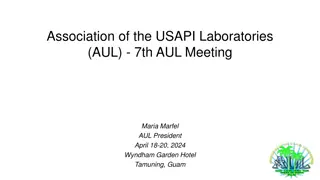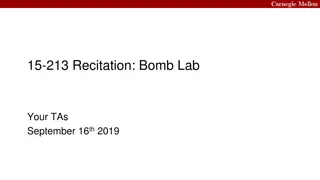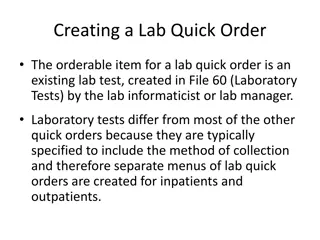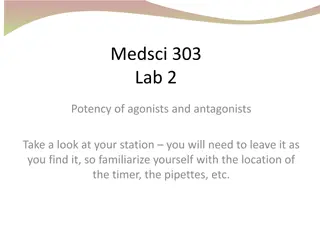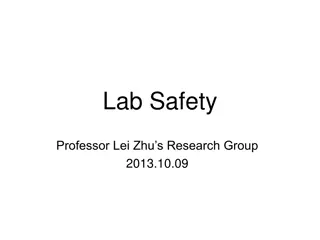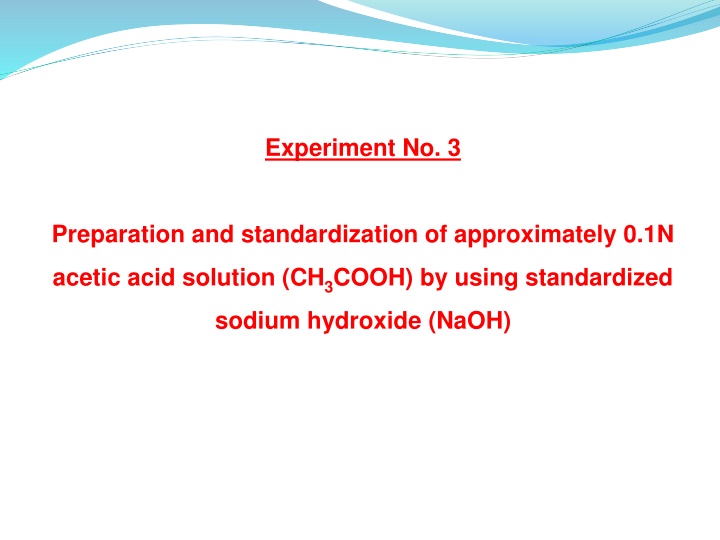
Standardization of Acetic Acid Solution using Sodium Hydroxide
Learn how to prepare and standardize approximately 0.1N acetic acid solution (CH3COOH) using standardized sodium hydroxide (NaOH). Understand the significance of phenolphthalein as an indicator in this titration process.
Download Presentation

Please find below an Image/Link to download the presentation.
The content on the website is provided AS IS for your information and personal use only. It may not be sold, licensed, or shared on other websites without obtaining consent from the author. If you encounter any issues during the download, it is possible that the publisher has removed the file from their server.
You are allowed to download the files provided on this website for personal or commercial use, subject to the condition that they are used lawfully. All files are the property of their respective owners.
The content on the website is provided AS IS for your information and personal use only. It may not be sold, licensed, or shared on other websites without obtaining consent from the author.
E N D
Presentation Transcript
Experiment No. 3 Preparation and standardization of approximately 0.1N acetic acid solution (CH3COOH) by using standardized sodium hydroxide (NaOH)
Acetic acid (CH3COOH) also known as ethanoic acid, (Ka = 1.8 10-5 at 25 C) and partially dissociated in an aqueous solution. CH3COO- + H3O+ acetate ion CH3COOH + H2O Glacial acetic acid is a pure and water-free acetic acid. It is a colorless liquid that absorbs water from the environment (hygroscopic), and freeze at 16.5 C to a colorless crystalline solid. Acetic acid can be detected by its characteristic smell which has a distinctive pungent odour.
Concentrated acetic acid is corrosive and therefore must be handled with appropriate care, since it can cause skin burns and permanent eye damage. These burns may not appear until hours after exposure. The titration of CH3COOH against NaOH solution is a titration of weak acid against strong base. CH3COONa + H2O CH3COOH + NaOH
The solution at equivalence point not neutral, but slightly alkaline, the calculated pH at equivalence point is 8.72. In this experiment, methyl orange or methyl red cannot be used because they change their color at a much lower pH (acidic medium), i.e. the color is changed before the equivalence point. Therefore, phenolphthalein (ph.ph) is used as indicator because its color changes in the alkaline region at a pH range of (8-9.6). Preparation of solutions: 1- Prepare 0.1 N NaOH in 250 mL of distilled water. 2- Prepare approximately 0.1 N CH3COOH in 250 mL of distilled water.
Prepare approximately 0.1 N CH3COOH in 250 mL of distilled water. Sp.gr = 1.049 , % = 98% , Formula weight = 60 g/mole. Sp.gr % 1000 F.wt of CH3COOH eq.wt = N = 1 eq.wt 1.049 98 2 12 + 4 1 + 2 16 1000 eq.wt = 100 N = 1 60 eq.wt = 60 g/mol N = 17.13 eq/L (N1 V1)conc. (N2 V2)dil. = 0.1 250 17.13 V1 = = 1.459 1.5 mL 17.13 V1 0.1 250 = You must take 1.5 ml of concentrated CH3COOH with a pipet, and dilute to 250 ml with distilled water in a 250ml- volumetric flask to obtain approximately 0.1 N CH3COOH.
Procedure: 1. Pipet 5 ml of acetic acid solution into a conical flask. 2. Add 2-3 drops of phenolphthalein indicator. The solution will be colorless. 3. Titrate the solution with the standardized NaOH solution from the burette until the color of solution changes into pink. Repeat the titration three (3) times. V CH3COOH (ml) VNaOH(ml) 5 V1 5 V2 5 V3 V1 + V2 + V3 3 V average = = (Y) ml NaOH
5 ml of 0.1 N NaOH solution CH3COOH (0.1N) 2-3 drops of phenolphthalein (ph.ph.) 5 ml of CH3COOH solution 2-3 drops of (ph.ph.) The Colour changed from collorless to pink (1) (2) (3)
Calculation: At the equivalence point no. of milliequivalence of CH3COOH no. of milliequivalence of NaOH = (N1 V1)NaOH = (N2 V2) CH3COOH N2 5 0.1 Vaverage = N2 5 0.1 Y = 0.1 Y = ( ) eq/L CH3COOH N2= 5




